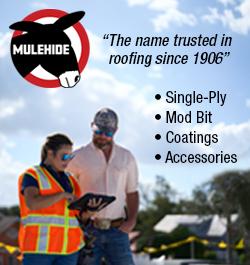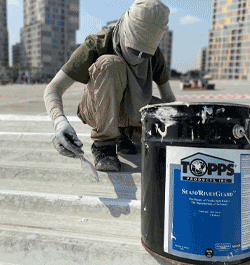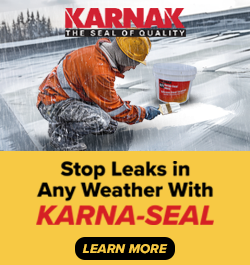UP TO THE MINUTE
Navigating the Key Differences Between U.S. and Canadian Roof Fall Protection Regulations

By Cotney Consulting Group.
Use this information to guide employers toward a safer, compliant working environment.
Maintaining the safety of workers in high-risk environments is a critical facet of any organization. The legal landscapes for such protocols differ in the United States and Canada, bringing unique challenges to the businesses operating in these regions. This article offers insights into these disparities and aims to guide employers toward a safer, compliant working environment.
Distinctive regulatory authorities: Federal versus provincial
While the United States and Canada share numerous similarities regarding roof fall protection rules, the administration of these regulations diverges substantially.
The Occupational Safety and Health Administration (OSHA) presides over safety regulations uniformly nationwide in the United States. It establishes rules, undertakes inspections, and addresses safety incidents under a singular authority.
Canada, on the other hand, exercises a provincial approach. The regulatory power is contingent on the facility's geographical location and, in certain instances, the nature of the work conducted. Therefore, companies in Canada often adhere to the stipulations of their local, provincial authorities.
Sourcing safety regulations: Navigating the landscape
Recognizing the intricacies of safety regulations between the U.S. and Canada can be challenging. For instance, while OSHA guardrail stipulations closely mirror Canada's standards, minor discrepancies might exist depending on the specific region or province.
In the U.S., reference to OSHA section 1926.500 is advised for comprehensive fall protection guidelines, applicable to all facilities nationwide. Notably, individual states like California enforce their unique safety regulations, necessitating a meticulous cross-check to ensure local compliance.
Canada's central OH&S (Occupational Health & Safety Act) presides over establishments employing federal workers. It is pertinent to businesses involved in federal contracts or general infrastructure work. Further, each Canadian province has its fall protection guidelines. For instance, Alberta OHS regulates fall protection under Part 9 of its code, while British Columbia OHS addresses the same in Part 11.
Common ground: Shared safety provisions
Regardless of the specific location of your business, the minimum safety prerequisites largely converge. Most regions necessitate registration with the local authority and/or submission of specific roof fall protection equipment, such as rooftop guardrails, for inspection.
Fall protection equipment: The specifics may vary across jurisdictions, but the overall emphasis remains on adequate guardrail systems wherever there is a risk of substantial falls. Both OSHA and Canadian OHS broadly agree on these requirements. The design particulars, such as the height and weight-bearing capacity of the guardrails, may differ, with stipulations like body harnesses and safety nets supplementing the protection measures in certain contexts.
Controlled access: A cornerstone of roof safety lies in preventing unauthorized and untrained personnel from accessing the roof. Measures such as locked doors, hatch guards, and ladder guards are commonly implemented. Periodic inspection and licensing are mandatory in most locations, with specifics varying based on the local regulatory authority.
Training requirements: Both OSHA and Canadian OHS mandate that employees with regular rooftop access or those engaged in work with known fall risks undergo thorough safety training. A range of mandatory and recommended classes is available, supported by online resources and materials.
In conclusion, while the specifics of roof fall protection guidelines may differ across regions, the prime objective remains the same: ensuring the safety of all personnel. Regular consultation with local regulatory guidelines and a commitment to continuous training can go a long way in creating a safer, more compliant working environment.
Learn more about Cotney Consulting Group in their Coffee Shop Directory or visit www.cotneyconsulting.com.




















Comments
Leave a Reply
Have an account? Login to leave a comment!
Sign In